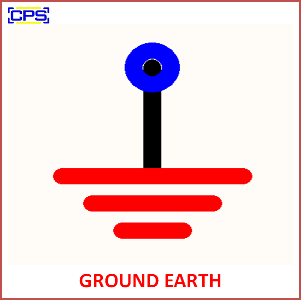Ground (Earth) refers to the physical connection of an electrical system or device to the Earth, typically through a conductive material like a metal rod or wire buried underground. This connection provides a safe path for fault currents or excess charge to flow into the Earth, preventing electrical hazards and ensuring the safety of equipment and users.

Key Features of Ground Earth:
- Safety and Protection:
- Provides a direct, low-resistance path for dangerous currents (such as those from a short circuit or lightning strike) to safely dissipate into the Earth, reducing the risk of electrical shock or fire.
- Voltage Stabilization:
- Ensures the proper functioning of electrical systems by maintaining a stable reference voltage for circuits and preventing potential differences that could damage equipment.
- Earthing Electrode:
- Typically involves a metal rod, plate, or other conductor buried in the Earth to create a direct connection between the electrical system and the ground.
- Earth as a Universal Reference:
- Used as a common reference point for all electrical systems, ensuring consistent voltage levels and reducing interference.
Applications:
- Electrical Power Systems: Grounding is used to protect power plants, transformers, and electrical distribution systems from overloads and faults.
- Residential and Industrial Wiring: Ensures electrical safety by connecting electrical systems to the Earth, protecting appliances and individuals from electric shock.
- Lightning Protection Systems: Provides a safe route for lightning strikes to discharge into the ground, preventing damage to buildings and electrical systems.
Grounding to Earth is a fundamental safety measure in electrical engineering, ensuring that electrical systems are safe, stable, and protected from faults and surges.
